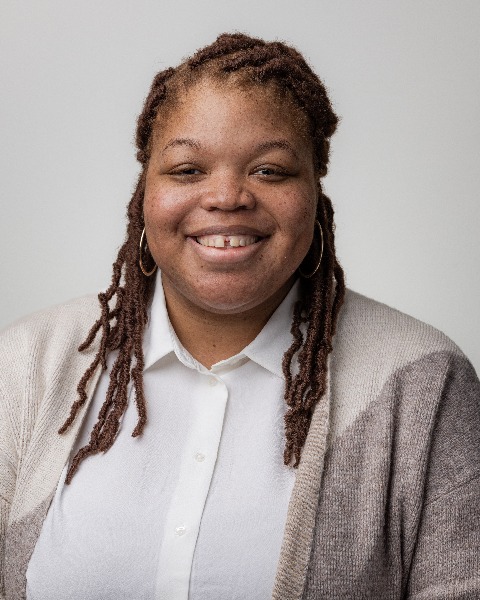Poster Spotlight
Brain Injury
Understanding the Needs of Community Health Centers in Addressing and Accommodating Patients Living with Brain Injury from Domestic Violence
Tuesday, October 31, 2023
4:04 PM - 4:10 PM
Location: Station 11

Sharefa Duhaney, MPH (she/her/hers)
PhD Student
The Ohio State University - College of Public Health
Columbus, Ohio, United States
Presenting Author(s)
Research Objectives: To understand from staff and administrators of community-health centers (CHCs) what is needed in order to address brain injury (BI) among patients, in general, and among domestic violence (DV) survivors, in particular.
Design: IRB-approved needs assessment self-administered surveys and researcher-facilitated interviews/focus groups were held between September 2021 and April 2023.
Setting: As COVID restrictions changed, individual interviews and focus groups were conducted virtually and then in-person with diverse staff at CHCs and advisory organizations.
Participants: 9 interviews and 8 focus groups were conducted with a volunteer sample of 38 participants recruited through CHC trainings and newsletters. Nearly 90% of the sample worked for agencies providing health services to patients; 34% provided technical assistance and training to CHCs. Most participants serving patients reported specializing in serving populations living in poverty, racial and ethnic groups, and people who are unstably housed. 69% endorsed specializing in work with DV survivors.
Interventions: Not Applicable.
Main Outcome Measures: Questions were asked related to knowledge of and readiness of CHCs to address DV, BI, and their intersection. Survey data was collected in Qualtrics and analyzed in SAS. Qualitative data was entered into ATLAS.ti to facilitate systematic coding and analytic comparisons.
Results: Nearly 75% of participants felt prepared to address DV; less than 40% felt prepared to treat BI. Few had considered how BI from DV could be impacting access to and success with health services, but many thought unidentified BI was probably common among CHC patient populations. Participants mentioned the lack of resources, knowledge, and training as barriers, and expressed a desire to grow in confidence and competence to provide BI-aware health services, including with DV survivors. Participants offered examples of prior successful CHC initiatives upon which programs to address brain injury education, identification and accommodation could be modeled.
Conclusions: Results will be used to create a training program and resources to increase the confidence of CHC staff to provide education and accommodation to DV survivors living with BI.
Author(s) Disclosures: None to disclose.
Design: IRB-approved needs assessment self-administered surveys and researcher-facilitated interviews/focus groups were held between September 2021 and April 2023.
Setting: As COVID restrictions changed, individual interviews and focus groups were conducted virtually and then in-person with diverse staff at CHCs and advisory organizations.
Participants: 9 interviews and 8 focus groups were conducted with a volunteer sample of 38 participants recruited through CHC trainings and newsletters. Nearly 90% of the sample worked for agencies providing health services to patients; 34% provided technical assistance and training to CHCs. Most participants serving patients reported specializing in serving populations living in poverty, racial and ethnic groups, and people who are unstably housed. 69% endorsed specializing in work with DV survivors.
Interventions: Not Applicable.
Main Outcome Measures: Questions were asked related to knowledge of and readiness of CHCs to address DV, BI, and their intersection. Survey data was collected in Qualtrics and analyzed in SAS. Qualitative data was entered into ATLAS.ti to facilitate systematic coding and analytic comparisons.
Results: Nearly 75% of participants felt prepared to address DV; less than 40% felt prepared to treat BI. Few had considered how BI from DV could be impacting access to and success with health services, but many thought unidentified BI was probably common among CHC patient populations. Participants mentioned the lack of resources, knowledge, and training as barriers, and expressed a desire to grow in confidence and competence to provide BI-aware health services, including with DV survivors. Participants offered examples of prior successful CHC initiatives upon which programs to address brain injury education, identification and accommodation could be modeled.
Conclusions: Results will be used to create a training program and resources to increase the confidence of CHC staff to provide education and accommodation to DV survivors living with BI.
Author(s) Disclosures: None to disclose.
Learning Objectives:
- Describe the resource, knowledge, and training barriers to addressing brain injury and domestic violence within health center services.
- Describe examples of prior successful community health center initiatives upon which a program for brain injury education, identification and accommodation can be modeled.
- Describe what health center staff need to address barriers facing staff to provide brain injury education, identification and accommodation

.jpg)
